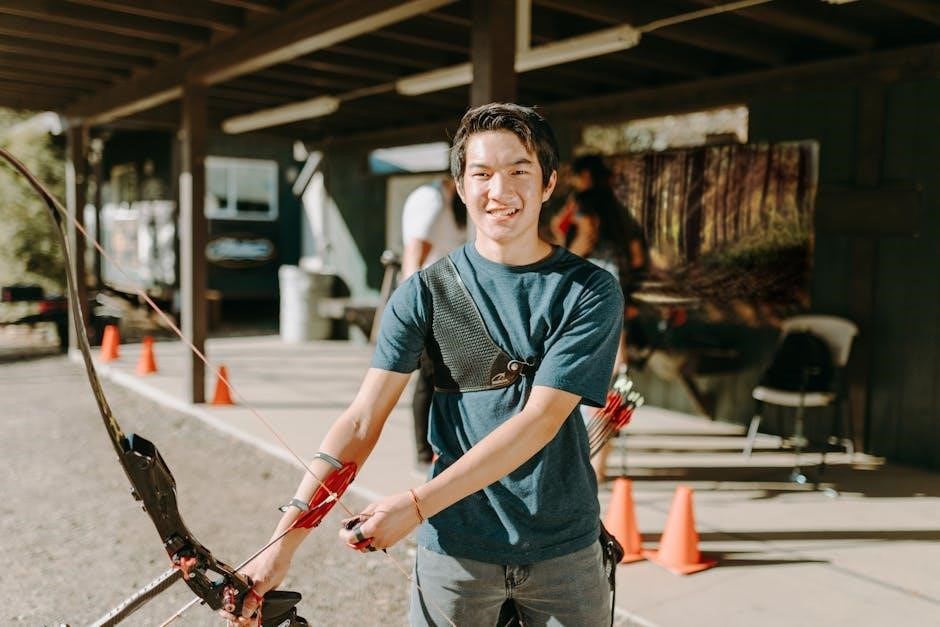Guided mule deer hunts offer hunters expert guidance‚ increasing success rates and providing unforgettable experiences. They cater to both novice and seasoned hunters‚ ensuring a well-organized and strategic approach to harvesting trophy bucks in stunning natural landscapes.
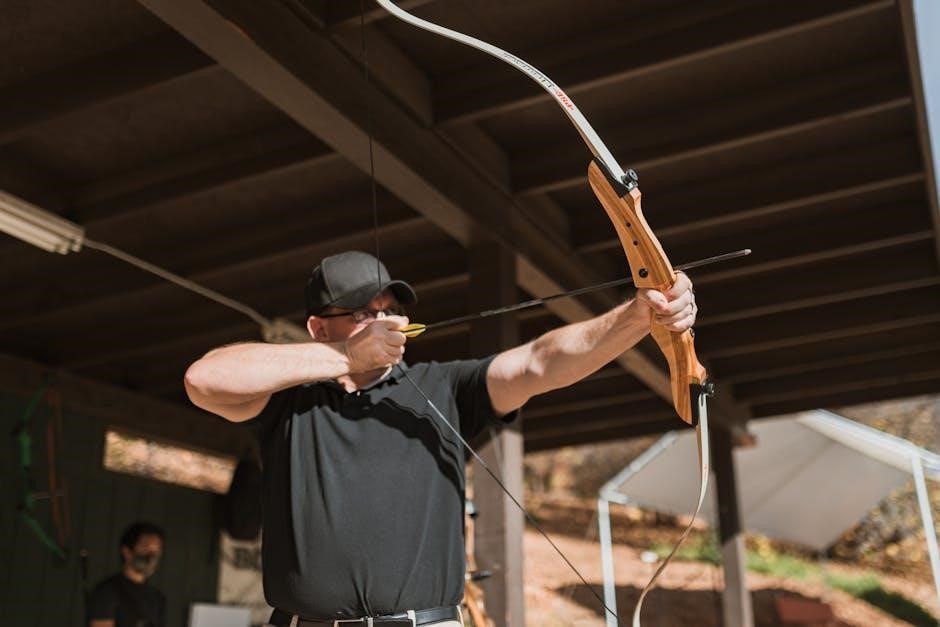
What Are Guided Mule Deer Hunts?
Guided mule deer hunts are organized hunting trips led by experienced professionals who specialize in tracking and harvesting mule deer. These guides provide expertise in locating trophy bucks‚ navigating terrain‚ and adhering to local regulations. They often operate in prime habitats‚ such as western U.S. landscapes‚ offering hunters access to exclusive areas and proven strategies. Whether for novice or seasoned hunters‚ guided hunts aim to maximize success and ensure a memorable experience‚ combining mentorship with a strategic approach to mule deer hunting.
Why Choose a Guided Hunt?
Choosing a guided mule deer hunt offers numerous advantages‚ particularly for those new to hunting or unfamiliar with the terrain. Guides provide valuable insights‚ ensuring hunters maximize their chances of success while adhering to local regulations. Their expertise in tracking‚ stalking‚ and ambush techniques enhances the overall experience‚ making it both enjoyable and productive. Additionally‚ guided hunts often include logistical support‚ allowing hunters to focus solely on the hunt‚ making the experience more convenient and rewarding.
Benefits of Hiring a Guide
Hiring a guide for mule deer hunting offers unparalleled expertise and access to prime locations. Guides possess deep knowledge of the terrain‚ deer behavior‚ and optimal hunting times‚ significantly increasing success rates. They often have access to private lands‚ reducing competition and enhancing opportunities. Additionally‚ guides handle logistics‚ allowing hunters to focus on the hunt. Their experience with gear‚ tracking‚ and field techniques ensures a smoother‚ more enjoyable experience‚ making guided hunts a valuable investment for both novice and experienced hunters seeking trophy-quality deer.
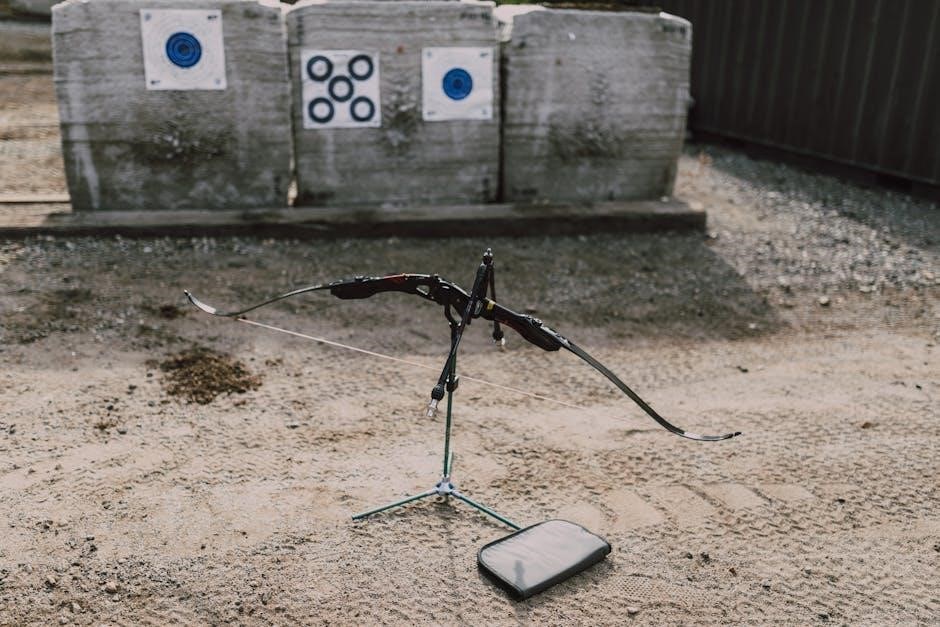
Preparing for a Guided Mule Deer Hunt
Preparation is key to a successful mule deer hunt. Research‚ physical conditioning‚ and gear readiness ensure hunters are primed for the challenges of the wilderness‚ maximizing their experience.
Physical and Mental Preparation
Physical conditioning is crucial for mule deer hunts‚ as it demands endurance and strength for long hikes and rugged terrain. Building stamina through cardio exercises and strength training ensures hunters can withstand the demands of the hunt. Mental preparation is equally vital‚ fostering focus and patience. Hunters must adapt to unpredictable conditions and high altitudes‚ which can be physically and mentally challenging. A well-prepared mindset helps in making quick‚ ethical decisions during the hunt‚ ensuring a safe and successful experience.
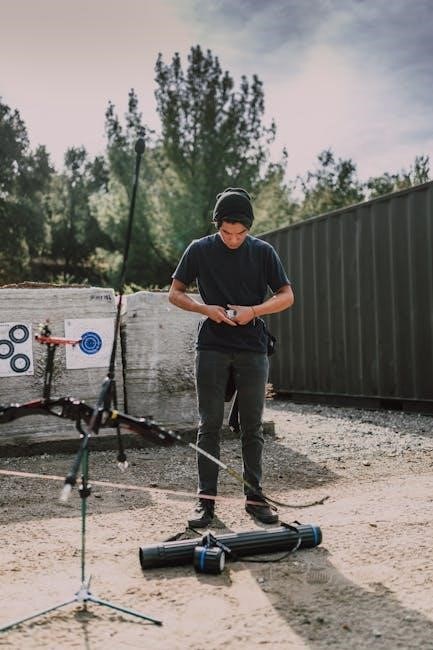
Essential Gear and Equipment
Packing the right gear is vital for a successful mule deer hunt. Essential items include high-quality optics like binoculars and scopes‚ a reliable rifle with appropriate ammunition‚ and durable camouflage clothing. Scent-control gear helps hunters remain undetected‚ while sturdy boots and layered clothing ensure comfort in varied conditions. A first-aid kit‚ hydration pack‚ and navigation tools like GPS are also critical. Multi-use items‚ such as a multi-tool or flashlight‚ add convenience. Ensuring all gear is well-maintained and suited for high-altitude‚ rugged terrain is key to a safe and effective hunt.
Understanding Local Regulations
Understanding local regulations is crucial for a compliant and ethical mule deer hunt; Hunters must obtain proper licenses‚ permits‚ and tags‚ which vary by state. Season dates‚ bag limits‚ and weapon restrictions are strictly enforced. Familiarizing yourself with property boundaries and restricted areas is essential to avoid legal issues. State wildlife agencies provide detailed guidelines‚ so consulting official sources is recommended. Adhering to these rules ensures conservation efforts and maintains hunting opportunities for future generations while promoting responsible and sustainable hunting practices. Stay informed to hunt responsibly and legally.
Choosing the Right Outfitter
Selecting a reputable outfitter is key to a successful mule deer hunt. Research their experience‚ success rates‚ and reviews. Ensure clear communication about expectations and services offered.
Research and Reviews
Researching and reading reviews is essential when selecting a guided mule deer hunt outfitter. Look for reviews from multiple sources‚ including forums‚ social media‚ and hunting communities. Pay attention to feedback on success rates‚ guide expertise‚ and overall customer satisfaction. Check for red flags‚ such as consistent negative reviews or unresolved complaints. Verify the outfitter’s reputation through state wildlife agencies and professional associations. A well-researched decision ensures a reliable and enjoyable hunting experience‚ aligning with your expectations and goals.
Red Flags to Avoid
When selecting a guided mule deer hunt‚ be cautious of outfitters with unclear pricing‚ lack of transparency‚ or poor communication. Avoid those with consistently negative reviews or unresolved complaints. Be wary of outfitters who guarantee trophy-sized deer‚ as this is unrealistic. Ensure the guide is properly licensed and insured. Avoid operations that disregard wildlife conservation or ethical hunting practices. Lastly‚ steer clear of outfitters who are unwilling to provide detailed information about the hunt or their experience. These red flags can lead to a disappointing or unprofessional hunting experience.
Questions to Ask Before Booking
Before booking a guided mule deer hunt‚ ask about the outfitter’s experience‚ success rates‚ and familiarity with the hunting area. Inquire about the specific tactics and strategies they employ. Clarify the cost‚ what’s included‚ and any hidden fees. Ask for references from past clients to gauge satisfaction. Find out about their licensing‚ insurance‚ and adherence to local regulations. Discuss the expected physical demands and terrain. Understand their communication methods during the hunt and availability for questions beforehand. Finally‚ ask about their approach to ethical hunting practices and trophy care.
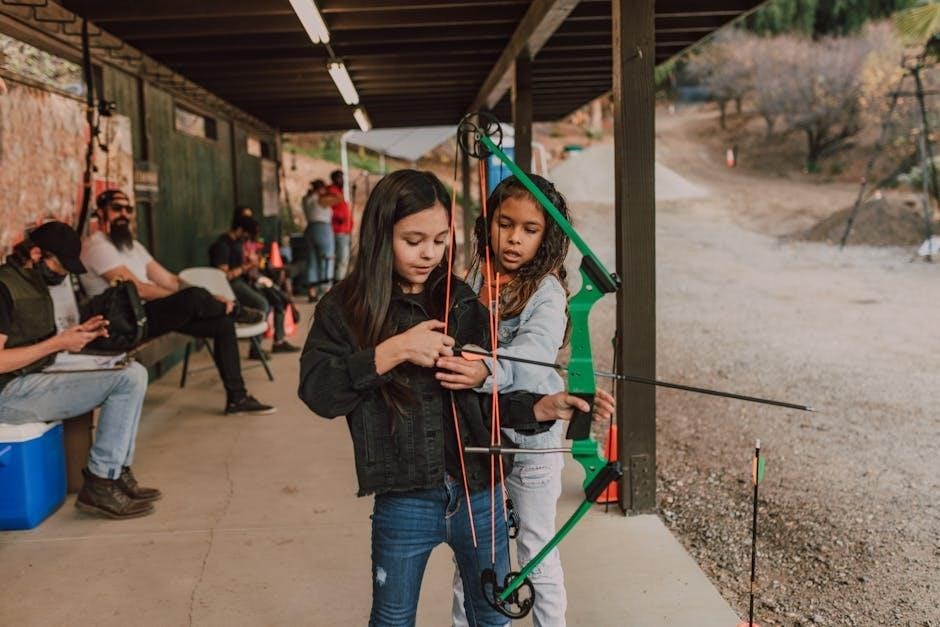
On the Hunt: Strategies and Tactics
Guided mule deer hunts emphasize using optics for spotting‚ scent control to avoid detection‚ and stalking or ambush techniques to get close to trophy bucks effectively.
Using Optics for Spotting Deer
Optics play a crucial role in guided mule deer hunts‚ enabling hunters to spot deer from great distances. Binoculars and spotting scopes are essential tools‚ allowing hunters to scan open terrain‚ hillsides‚ and meadows for signs of movement. High-quality optics with magnification power and clarity help identify buck size and antler quality. Guides often use these tools to locate herds and track individual deer‚ ensuring hunters are positioned for successful shots. Effective use of optics enhances the hunting experience and increases the chances of harvesting a trophy buck.
Importance of Scent Control
Scent control is vital in guided mule deer hunts‚ as deer possess a keen sense of smell. Hunters must minimize human odor to avoid detection. Guides recommend using scent-blocking clothing‚ sprays‚ and soaps to mask smells. Staying downwind of deer and avoiding strong fragrances further reduces the risk of spooking them. Effective scent management increases the likelihood of close encounters‚ allowing for ethical shots and a successful hunt. Attention to detail in scent control can make the difference between harvesting a trophy buck and leaving empty-handed.
Stalking and Ambush Techniques
Guided mule deer hunts emphasize mastering stalking and ambush techniques to outsmart trophy bucks. Guides teach hunters to move quietly‚ using terrain and cover to remain undetected while closing the distance. Ambush strategies involve setting up in areas deer frequent‚ such as food sources or water‚ and waiting for the perfect shot. Patience and precision are key‚ as these methods often lead to thrilling‚ close-range encounters with mature deer‚ making the hunt both challenging and rewarding.
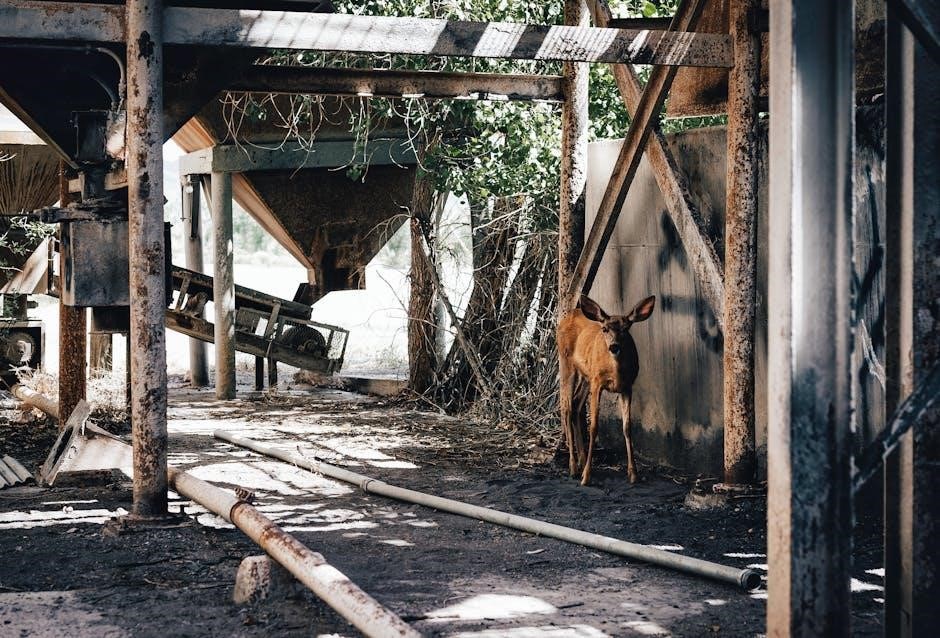
Post-Hunt Procedures
Post-hunt procedures ensure proper handling of harvested deer‚ emphasizing field dressing and meat care to maintain quality. Guides often assist with skinning‚ quartering‚ and preserving the harvest for taxidermy or storage.
Field Dressing and Meat Care
Field dressing is a critical step post-hunt‚ ensuring the meat remains fresh and high-quality. Guides often demonstrate proper techniques‚ such as the gutless method‚ to avoid contamination. Cooling the carcass quickly is essential to prevent spoilage. Proper handling involves skinning and quartering the deer for efficient transport. Experienced outfitters may also assist with preserving the meat for future use or arranging processing. Learning these skills enhances the overall hunting experience and ensures the harvest is respected and utilized fully.
Preserving the Harvest
Proper preservation ensures the mule deer’s meat remains fresh and flavorful. After field dressing‚ cooling the carcass quickly is vital to prevent spoilage. Skinning and quartering the deer facilitates efficient transport and storage. Guides often assist with methods like freezing‚ canning‚ or smoking to preserve the meat. Additionally‚ making jerky or sausages is a popular way to enjoy the harvest year-round. Proper preservation respects the animal and maximizes the value of the hunt‚ ensuring every part is utilized thoughtfully.
Cost and Value of Guided Hunts
Guided mule deer hunts vary in cost based on location‚ duration‚ and services. While they can be expensive‚ experienced guides provide expertise‚ access to prime areas‚ and higher success rates‚ making the investment worthwhile for many hunters.
Understanding Pricing Models
Pricing for guided mule deer hunts varies based on factors like location‚ season‚ and services. Trophy fees‚ daily rates‚ and package deals are common structures. Some outfitters charge a flat fee‚ while others break costs into licensing‚ gear‚ and guiding. High-demand areas with larger trophy potential often cost more. Researchers should compare packages to find the best value‚ ensuring transparency in what’s included‚ such as meals‚ accommodations‚ and field prep.
What’s Included in the Package
Guided mule deer hunt packages typically include expert guiding‚ field preparation of harvested deer‚ and access to prime hunting locations. Meals and accommodations are often provided‚ ensuring a comfortable experience. Licensing and permits may incur additional costs‚ while gear like rifles or optics might be available for rent. Transportation during the hunt and trophy care services are usually included‚ enhancing the overall value. Packages vary by outfitter‚ but most aim to offer a seamless and memorable hunting experience for all skill levels.
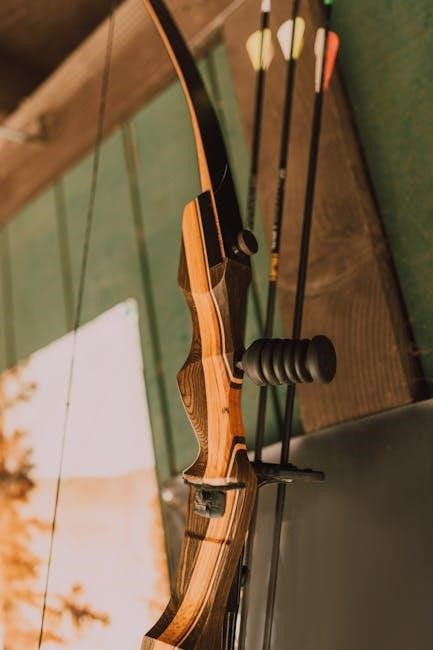
Testimonials and Success Stories
Hunters rave about guided mule deer hunts‚ citing high success rates‚ expert guides‚ and unforgettable experiences that create lifelong memories in stunning wilderness settings.
Hunter Experiences and Feedback
Hunters consistently praise guided mule deer hunts for their expert guidance‚ high success rates‚ and unforgettable adventures. Many highlight the guides’ deep knowledge of terrain and deer behavior‚ which significantly increases chances of harvesting trophy bucks. Feedback often emphasizes the camaraderie and personalized attention received‚ making the experience both rewarding and educational. Some hunters mention the physical and mental challenges but appreciate the support and strategies provided by guides‚ such as scent control and optics use‚ to enhance their hunting success and overall enjoyment in the field.
Success Rates and Trophy Quality
Guided mule deer hunts boast high success rates due to experienced guides’ intimate knowledge of habitats and deer behavior. Trophy quality is often exceptional‚ with guides focusing on mature bucks that meet or exceed hunter expectations. Many outfitters pride themselves on harvesting deer with impressive antler sizes and symmetrical growth. Success rates are significantly higher for guided hunts compared to DIY efforts‚ making them a preferred choice for hunters seeking both memorable experiences and high-quality trophies in iconic western landscapes.
